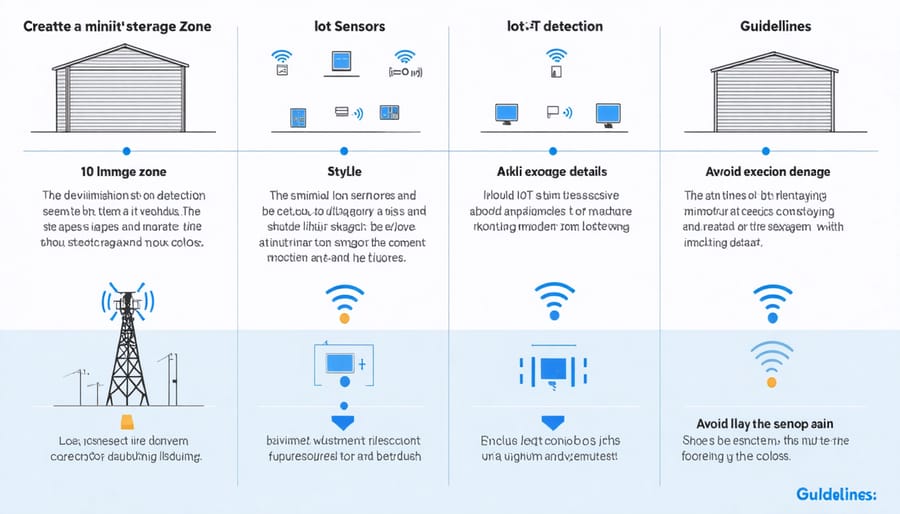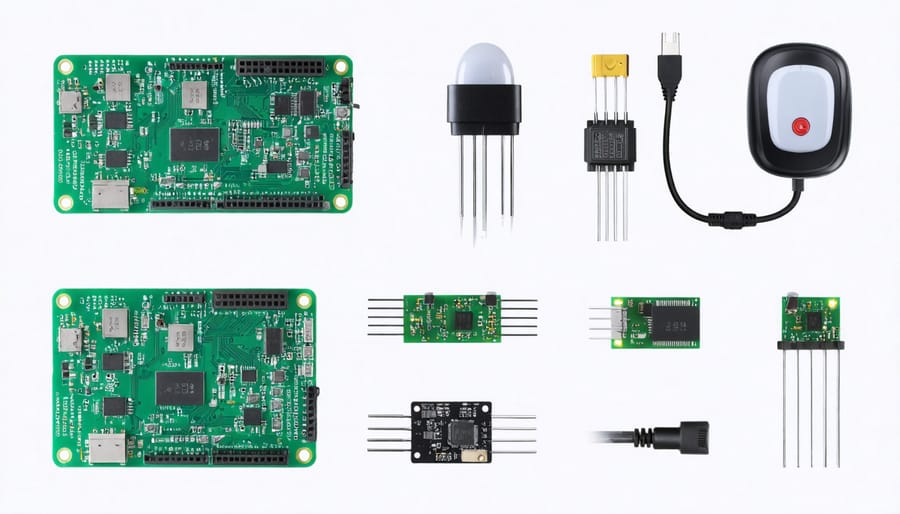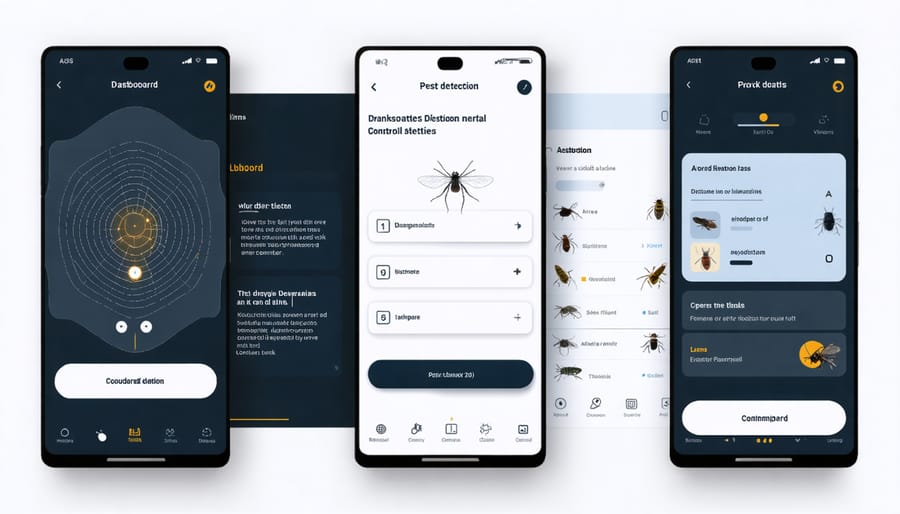Smart Pest Control That Actually Works: IoT Solutions for Your Storage Shed

Transform your storage shed into a sophisticated pest-free zone with modern smart monitoring systems that detect and respond to unwanted visitors before they cause damage. Today’s IoT-enabled pest control combines motion sensors, automated traps, and real-time smartphone alerts to protect valuable belongings without harmful chemicals or constant maintenance.
Gone are the days of discovering pest problems after the damage is done. Smart pest control systems use advanced infrared technology and AI-powered cameras to identify specific pest species, track their movement patterns, and activate targeted deterrent measures automatically. These systems not only prevent infestations but also provide valuable data about vulnerability points and pest activity cycles.
For storage shed owners, smart pest control represents a revolutionary shift from reactive to proactive protection. Whether safeguarding family heirlooms, seasonal decorations, or valuable tools, these intelligent systems offer peace of mind through 24/7 monitoring and immediate response capabilities. With customizable settings, weather-resistant components, and user-friendly mobile interfaces, modern pest control solutions deliver professional-grade protection while remaining accessible to everyday homeowners.
How IoT-Based Pest Control Transforms Your Storage Shed
Smart Sensors: Your 24/7 Pest Detection System
Modern pest detection has evolved beyond simple traps, thanks to innovative sensor technology that works alongside smart climate control systems to protect your storage space. These intelligent sensors act as your vigilant guardians, monitoring your shed 24/7 for signs of unwanted visitors.
Motion sensors strategically placed near entry points and corners can detect even the smallest movements, while infrared sensors identify heat signatures from rodents and other pests. Ultrasonic detectors pick up on the high-frequency sounds that many pests make, alerting you before visible damage occurs.
What makes these sensors truly “smart” is their ability to distinguish between harmless activity and genuine threats. They can tell the difference between a leaf blown by wind and a mouse scurrying across the floor. When these sensors detect suspicious activity, they immediately send notifications to your smartphone, allowing you to take quick action.
Many of these systems also collect data over time, helping you identify patterns in pest activity and optimize your prevention strategy. This proactive approach means you can address potential problems before they become major headaches.

Real-Time Alerts: Stop Pests Before They Settle In
Gone are the days of discovering pest problems after the damage is done. Modern smart pest control systems act as vigilant guardians, sending instant notifications to your smartphone the moment suspicious activity is detected. These real-time alerts are your first line of defense, enabling you to take immediate action before pests can establish a foothold in your storage space.
Motion sensors and smart cameras work together to identify potential pest intrusions, distinguishing between harmless movements and genuine threats. When activity is detected, you’ll receive detailed notifications specifying the location and type of disturbance, complete with photo or video evidence when available.
The system can be customized to your preferences, allowing you to set sensitivity levels and notification frequencies. You might choose to receive alerts only for specific areas or during certain times of day. Some advanced systems even integrate with smart home platforms, automatically triggering deterrent measures like ultrasonic repellents or adjusting lighting when pest activity is detected.
This proactive approach not only prevents pest-related damage but also provides peace of mind, knowing your stored belongings are protected around the clock.
Setting Up Smart Pest Control in Your Shed
Essential Components and Installation
Setting up smart pest control in your storage shed is similar to a smart security installation, and you’ll be pleased to know it’s surprisingly straightforward. Start with a central hub that connects to your home’s WiFi network – this will be the brain of your pest control system. You’ll need:
• A smart hub controller
• Motion and vibration sensors
• Ultrasonic pest repellers
• Optional camera sensors
• Weather-resistant power supply
• WiFi extender (if your shed is far from your house)
Begin by mounting the hub in a high, dry location within your shed. Connect it to power and ensure it pairs with your home network. Next, install motion sensors in corners and near potential entry points – typically about 6 inches from the ground where pests are most likely to travel.
Position ultrasonic repellers strategically around the space, ensuring their signals cover the entire area. Most sheds require 2-4 units depending on size. Mount them at least 2 feet off the ground and away from dense storage areas that could block the sound waves.
If you’ve opted for camera sensors, place these in upper corners for the best coverage. Finally, download your system’s smartphone app and follow the guided setup process to connect all components. Remember to test each element individually before finalizing the installation.
Don’t forget to seal any visible entry points before activating your system – even the best smart technology works better when combined with basic prevention measures. Regular maintenance is minimal, usually just requiring occasional battery checks and app updates.

Connecting Your System to Your Smart Home
Integrating your smart pest control system with your existing home automation setup is easier than ever. Most modern pest control solutions are designed to work seamlessly with popular platforms like Apple HomeKit, Google Home, and Amazon Alexa. This compatibility allows you to monitor and manage your pest control system alongside other smart monitoring systems through a single dashboard.
Start by downloading your system’s dedicated mobile app, which typically guides you through the connection process. Most apps will automatically detect your pest control devices once they’re powered on and connected to your Wi-Fi network. You can then customize alert settings, scheduling, and automation rules to suit your needs.
For example, you might set up your system to automatically activate ultrasonic deterrents when motion sensors detect activity, or receive instant notifications on your phone when pest activity is detected. Many systems also integrate with smart cameras, allowing you to verify alerts and monitor activity in real-time.
The real power of integration comes from creating automated routines. You can program your pest control system to work in harmony with other smart devices – like having your storage shed lights turn on automatically when pest activity is detected, or adjusting deterrent settings based on the time of day.
Remember to keep your mobile app and firmware updated to ensure optimal performance and security. Most manufacturers regularly release updates that add new features and improve compatibility with various smart home platforms.

Maintaining Your Smart Pest Control System
Regular Maintenance Tips
To keep your smart pest control system running efficiently, establish a monthly maintenance routine. Start by checking all sensors and monitoring devices for proper functionality – look for steady indicator lights and ensure all connections are secure. Clean sensor lenses and cameras with a soft, dry cloth to maintain optimal detection capabilities.
Review your system’s data logs every two weeks to identify any unusual patterns or potential blind spots in coverage. This proactive approach helps you adjust and optimize your pest control strategy before issues escalate. Update your system’s software whenever new versions become available, as these often include important security patches and performance improvements.
Replace batteries in wireless components according to the manufacturer’s recommendations, typically every 3-6 months. For solar-powered devices, clean the panels quarterly to ensure efficient charging. Inspect all entry points and seals around your storage area monthly, paying special attention to areas where cables or sensors penetrate walls.
Test your system’s emergency alerts and notification settings quarterly to ensure you’ll receive timely warnings when needed. If your system includes mechanical components like automatic doors or ventilation controls, lubricate moving parts every six months to prevent wear and maintain smooth operation.
Document all maintenance activities in a digital or physical logbook, including dates, actions taken, and any concerns noted. This record helps track system performance over time and anticipate when components might need replacement.
Common Issues and Solutions
Even the most advanced smart pest control systems can encounter occasional hiccups. If your sensors aren’t detecting properly, first check the battery levels and ensure all devices are within the recommended range of your hub. Connection issues often resolve with a simple system restart or by relocating devices closer to the central unit.
For ultrasonic repellers, a common complaint is that they seem ineffective. Remember that these devices work best when placed at pest entry points and may take several weeks to show results. If you notice decreased effectiveness, ensure no furniture or storage items are blocking the sound waves.
False alerts from motion sensors can be frustrating. Adjust the sensitivity settings and ensure sensors aren’t facing windows or areas with changing light patterns. For camera-based systems, regular cleaning of the lens and proper positioning away from direct sunlight will improve performance.
Some users report issues with mobile app connectivity. Keep your app updated to the latest version and check that your Wi-Fi signal is strong throughout your storage area. If problems persist, temporarily disconnecting and reconnecting devices often resolves sync issues.
For bait station monitors, calibrate them regularly and clean any debris that might interfere with readings. During extreme weather conditions, you may need to check and adjust placement to maintain effectiveness.
Remember that most smart pest control systems work best as part of an integrated approach, combining different methods for optimal results.
Cost-Benefit Analysis of Smart Pest Control
Investing in smart pest control systems for your storage shed might seem like a significant upfront expense, but the long-term benefits often outweigh the initial costs. A comprehensive smart pest control solution, especially when paired with smart home integration, typically ranges from $200 to $600, depending on the features and coverage area.
Let’s break down the financial benefits: Traditional pest control methods often require monthly or quarterly professional treatments, costing anywhere from $50 to $100 per visit. Over just one year, these recurring expenses can add up to $400 or more. Smart pest control systems, on the other hand, operate continuously with minimal maintenance costs, usually requiring only annual sensor battery replacements and occasional system updates.
Beyond direct cost savings, smart pest control protects your valuable stored items from damage. Consider the potential losses: family heirlooms, seasonal decorations, power tools, or camping equipment can easily amount to thousands of dollars in replacement costs if damaged by pests. The early detection capabilities of smart systems prevent such losses by addressing pest issues before they become serious infestations.
Many homeowners report additional benefits that add value to their investment. The remote monitoring feature provides peace of mind, especially for those who travel frequently or maintain multiple properties. The detailed activity logs help identify patterns and potential entry points, making prevention more effective over time. Some insurance companies even offer reduced premiums for properties with smart pest management systems, considering them as risk-mitigation measures.
When factoring in the convenience of automated monitoring, reduced need for chemical treatments, and protection of stored items, smart pest control systems typically pay for themselves within the first 12-18 months of installation. This return on investment continues to grow as the system operates year after year, making it a wise choice for long-term storage protection.
Smart pest control systems represent a significant leap forward in protecting our storage spaces and belongings. By combining IoT technology with traditional pest management methods, homeowners can now enjoy peace of mind knowing their sheds and stored items are protected around the clock. The real-time monitoring, automated responses, and data-driven insights provided by these systems not only make pest control more effective but also more environmentally friendly and cost-efficient in the long run.
Looking ahead, the future of smart pest control appears even more promising. We can expect to see more sophisticated sensors, improved AI capabilities for pest identification, and even better integration with other smart home systems. These advancements will likely make pest control systems more accessible and easier to use for the average homeowner.
Whether you’re protecting valuable equipment, seasonal decorations, or family heirlooms, smart pest control offers a modern solution that aligns with our increasingly connected world. As technology continues to evolve, these systems will only become more intelligent and efficient, making them an invaluable tool for maintaining pest-free storage spaces.

